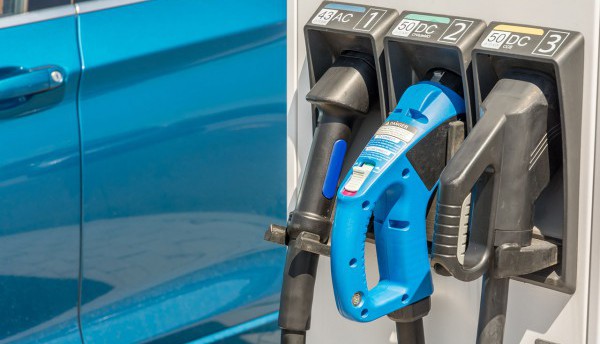
The fast-charging sector for electric vehicles is evolving with new technologies and changing consumer needs. A major trend is the rise of ultra-fast charging stations, which can recharge an EV's battery to 80% in just 15 to 30 minutes, significantly reducing drivers’ wait times.
Smart charging technologies are also gaining traction, optimizing charging based on grid conditions and energy prices. This includes demand response programs that allow EVs to charge during off-peak hours or when renewable energy is plentiful, improving grid stability.
Real-time monitoring systems are becoming essential for overseeing charging station performance. These systems help with predictive maintenance by spotting potential issues early, reducing downtime.
The expansion of charging networks is paramount, focusing on strategic locations near power sources and high-traffic areas for better accessibility. Additionally, strong cybersecurity measures are necessary to protect sensitive data and ensure secure transactions. Together, these trends are creating a more efficient and user-friendly fast-charging ecosystem for EVs.
To gain insights, we spoke with Brendan Harney, president of Camber Charging, a developer of power distribution systems for EV fast-charging depots.

The following is an edited transcript of the conversation:
S&P Global Mobility: What advanced power distribution systems does Camber use to manage the high power demands of fast-charging stations, and how do you mitigate the risks of overload and downtime?
Brendan Harney: Camber’s power distribution systems are tailored to meet specific customer needs, using modular charging equipment and our Camber Core software to allocate power based on vehicle load and charge levels. This approach enhances performance and cost efficiency, particularly during peak demand. We incorporate redundancy and intelligent controls to prevent overload and downtime, continuously monitoring the systems to quickly resolve issues and ensure reliable fleet operations and performance standards for investors.
What real-time monitoring systems do you use to track the performance and health of your charging stations? How do these systems facilitate predictive maintenance and minimize downtime?
Camber Core is our real-time monitoring system that tracks the performance and health of charging depots. It collects and analyzes data from chargers, switchgear and grid connections to identify anomalies and early signs of failure, enabling predictive maintenance. This allows for proactive repairs and remote interventions. In case of a fault, the system can isolate affected components, reroute power or trigger automated resets to ensure service continuity. Overall, Camber Core provides high uptime, faster issue resolution and reliable operations across our charging network.
How do you integrate your fast-charging stations with the grid, particularly regarding demand response programs? What technologies do you use to optimize charging times based on grid conditions?
Camber’s charging systems are not enrolled in demand response (DR) programs, but our infrastructure is designed to support them as they evolve. Our fast-charging depots are grid-interactive and use established communication protocols, such as OCPP, IEEE 2030.5 and ISO 15118 to facilitate future DR and vehicle-to-grid (V2G) participation. Camber Core can respond to utility signals and manage charging strategies based on fleet needs and billing cycles. This setup allows us to integrate with emerging utility programs, optimize charging according to grid conditions and contribute to a more resilient electricity grid.
What key performance indicators do you track to evaluate the efficiency and effectiveness of your fast-charging stations? How do these metrics inform operational improvements and strategic decisions?
Camber monitors key performance indicators (KPIs) to assess the efficiency of our fast-charging stations. These include fleet readiness, charging power and efficiency, port utilization and energy cost optimization. We also track customer satisfaction regarding communication about charging strategies and alignment with operational goals. These metrics are integrated into Camber Core, our energy orchestration platform, to improve site operations, enhance user experience and guide decisions on infrastructure expansion and system upgrades.
As your charging network relies heavily on data exchange, what cybersecurity measures do you have in place to protect sensitive information and ensure the integrity of charging transactions?
Camber uses Advanced Wireless Services (AWS) infrastructure for its services and follows robust cybersecurity practices. We implement role-based access control to restrict data access to designated individuals and services involved in the charger operation. Identity management is secured through roles and multifactor authentication (MFA). For network security, we use multiple layers, including security groups, network segmentation, API gateways and VPN access. Data is encrypted both at rest and in transit. Camber employs AWS Cognito for user identity management without storing user credentials. All source code changes undergo peer review and testing, and we use static code analysis tools to identify security risks and vulnerabilities in third-party libraries.
How does your selection process work for site location of new fast-charging stations and what role does grid proximity play?
Camber builds depots at customer locations and collaborates with them to ensure timely access to power from utilities. If utility power is limited, we assist customers with load management strategies and provide temporary or permanent site power solutions to meet their electrification timelines and address grid capacity shortfalls.








